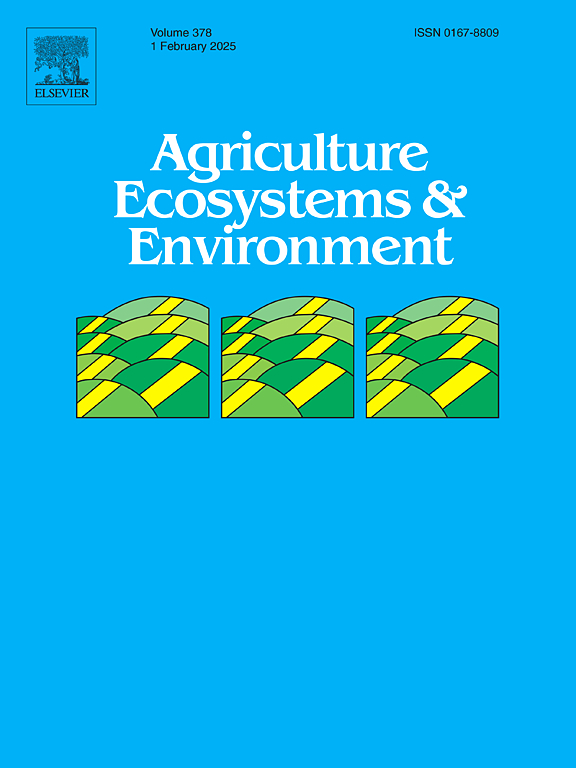间作可以提高植物的水分供应量和用水效率:综述
IF 6
1区 农林科学
Q1 AGRICULTURE, MULTIDISCIPLINARY
引用次数: 0
摘要
间作是指将一年生作物与替代作物或非作物经济作物相结合,具有加强水源保护和稳定农业生态系统的潜力。然而,很少有研究全面探讨了间作对水循环的影响。在此,我们研究了间作对五个关键水循环过程(状态)的影响:土壤含水量(SWC)、径流(RO)、土壤蒸发(E)、叶面蒸腾(LT)和水分利用效率(WUE)。为此,我们利用全球数据集进行了荟萃分析,该数据集由 64 篇出版物中的 1285 个配对观测数据组成。我们发现,间作减少了 SWC(1.31%)、RO(29.17%)和 E(10.30%),但增加了 LT(9.85%)和 WUE(29.46%)。间作对 SWC、E 和 RO 的影响在一年内没有显著波动,但在多年种植期,SWC 最初下降,然后上升。此外,间作效果取决于气候条件(年平均降水量和温度)、土壤特性(有机质含量、容重和全氮含量)和农业实践(作物类型、施肥和灌溉)。我们确定,资源互补、非生物促进和生物反馈机制可能是间作对水循环产生影响的基础。这项研究强调了利用间作来改善植物对水的利用、提高种植系统的可持续性和生产力的潜力。本文章由计算机程序翻译,如有差异,请以英文原文为准。
Intercropping increases plant water availability and water use efficiency: A synthesis
Intercropping, involving the incorporation of annual crops with alternative crops or non-crop cash crops, has the potential to enhance water conservation and stabilize agroecosystems. However, few studies have comprehensively explored the effects of intercropping on water cycling. Here, we investigated the impacts of intercropping on five crucial water cycle processes (states): soil water content (SWC), runoff (RO), soil evaporation (E), leaf transpiration (LT), and water use efficiency (WUE). To this end, a meta-analysis was carried out utilizing a global dataset comprising 1285 paired observations from 64 publications. We found that intercropping reduced SWC (1.31 %), RO (29.17 %), and E (10.30 %), but increased LT (9.85 %) and WUE (29.46 %). The effects of intercropping on SWC, E, and RO did not exhibit significant fluctuations over the course of a year, but SWC initially decreased then increased in multi-year planting durations. Moreover, the intercropping effect was contingent upon climatic conditions (mean annual precipitation and temperature), soil characteristics (organic matter content, bulk density, and total nitrogen content), and agricultural practices (crop type, fertilization, and irrigation). We determined that resource complementarity, abiotic facilitation, and biotic feedback mechanisms may underlie the effect of intercropping on the water cycle. This research underscores the potential of using intercropping to improve plant water usage and the sustainability and productivity of cropping systems.
求助全文
通过发布文献求助,成功后即可免费获取论文全文。
去求助
来源期刊

Agriculture, Ecosystems & Environment
环境科学-环境科学
CiteScore
11.70
自引率
9.10%
发文量
392
审稿时长
26 days
期刊介绍:
Agriculture, Ecosystems and Environment publishes scientific articles dealing with the interface between agroecosystems and the natural environment, specifically how agriculture influences the environment and how changes in that environment impact agroecosystems. Preference is given to papers from experimental and observational research at the field, system or landscape level, from studies that enhance our understanding of processes using data-based biophysical modelling, and papers that bridge scientific disciplines and integrate knowledge. All papers should be placed in an international or wide comparative context.
 求助内容:
求助内容: 应助结果提醒方式:
应助结果提醒方式:


